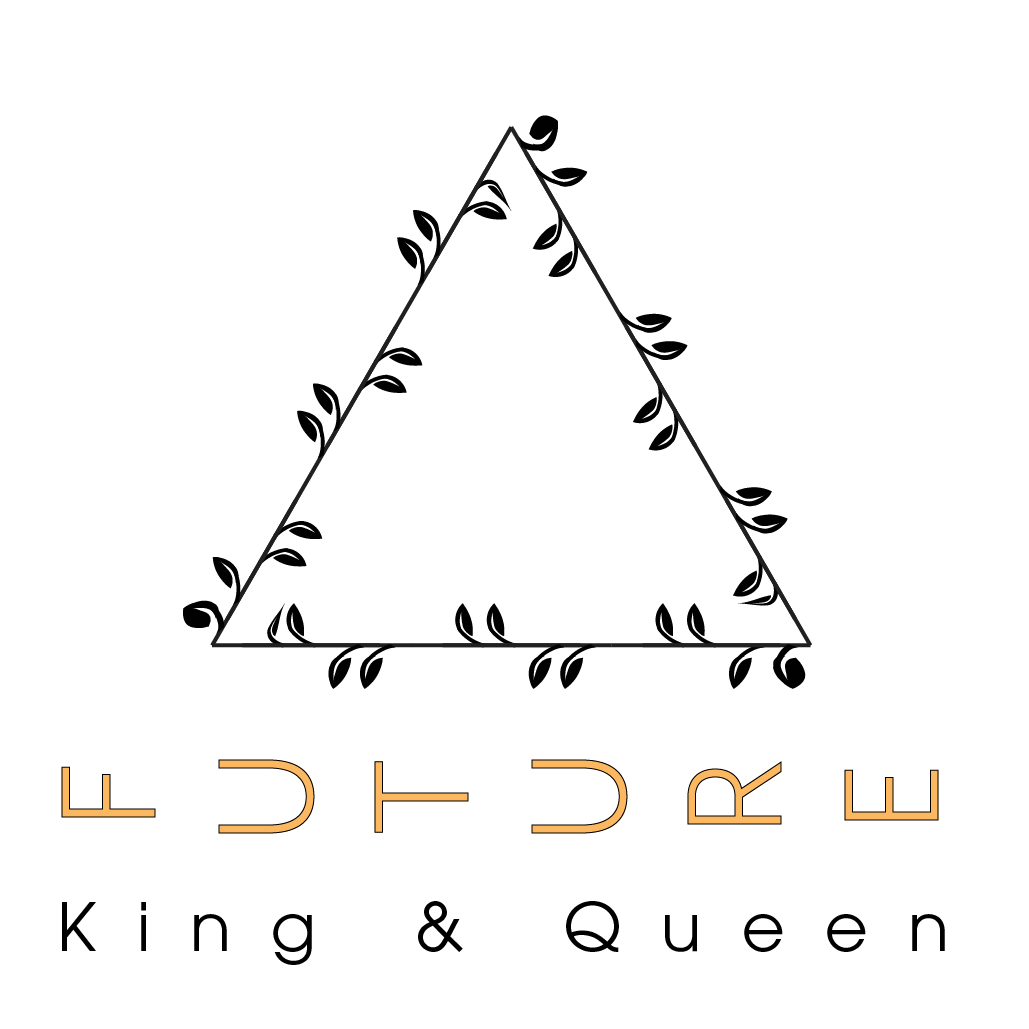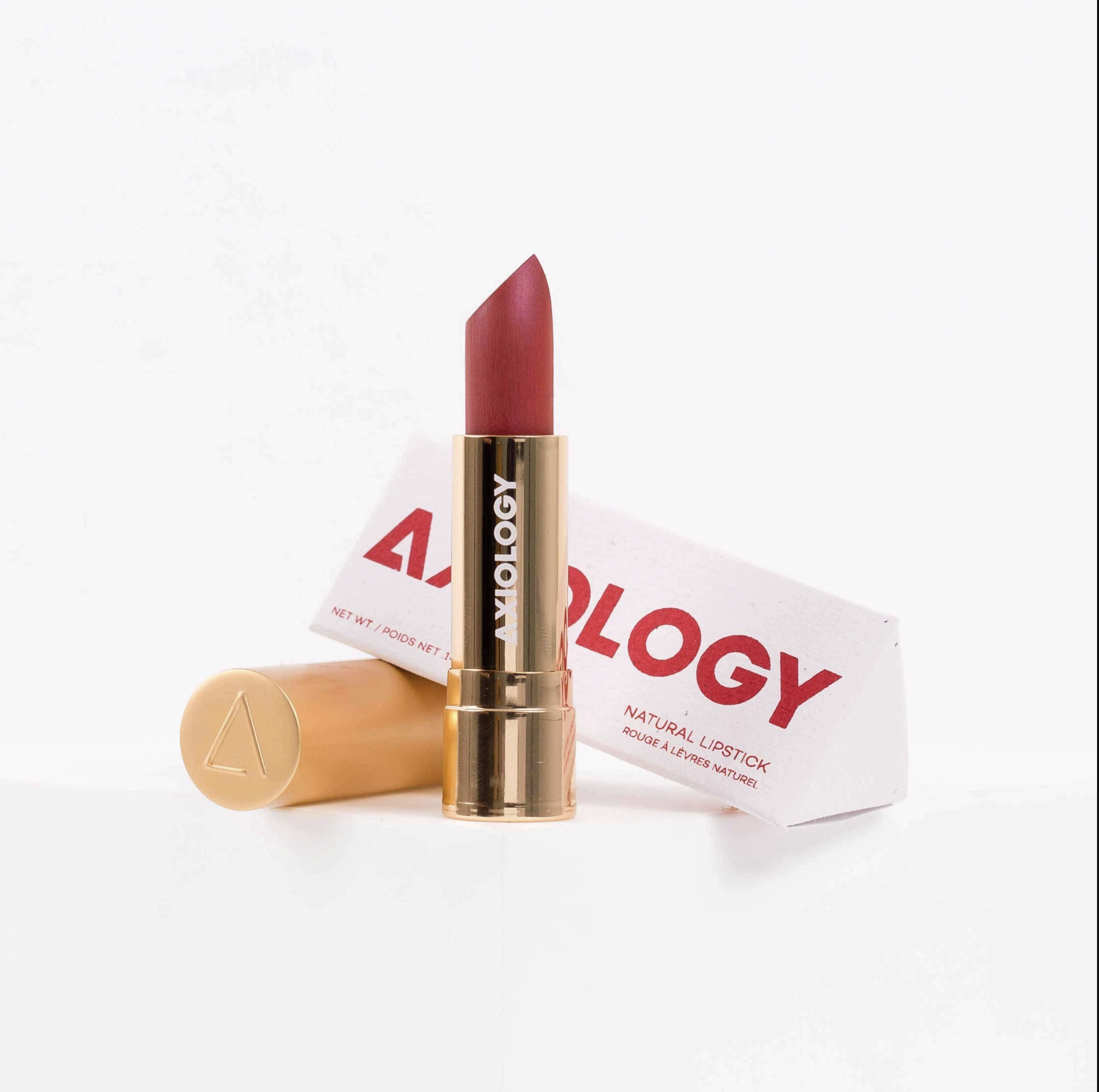Lipstick ingredients to avoid and why.
Many of the biggest selling lipsticks have ingredients which are probably best left in the chemist laboratory,
but before we get into that,
let's look back in the history books
to discover what lipstick USED to be made from ...
Origins of Lipstick:
who on earth first wore it?
And what was it made from?
Lipstick has a curious history - sometimes being associated with royalty and wealth, and at other times with the devil and trickery. The ingredient list has gone almost full-circle - from nourishing oils to highly toxic substances - and now back again, to more natural, organic ingredients.
The earliest lipsticks were made from crushed rocks, and were used in various ancient cultures. In parts of Australia, it was an ancient Aborignal practice to apply crushed ochre lipstick to girls during some puberty ceremonies. Ancient Sumerian men and women used the crushed rock to decorate their lips and around their eyes (around 5000 years ago).
By Cleopatra's time, crushed bugs had made it into the lipstick ingredient list. Egyptians from around this time (over 2000 years ago) also used iodine, bromine mannite and a red dye extracted from fucus-algin - but this was a fairly lethal combination.
Solid lipsticks are thought to have been invented by Abu al-Quasim al-Zaharawi, an Andalusian surgeon and physician who lived in the 11th century and was a pioneer in surgical techniques and inventions. He wrote of perfumed sticks which took their shape from special moulds, to be applied to the lips to add colour.
Its use in Europe waxed and waned with the influence of the Church and Royalty, but women would still make their own lipstick at home, from beeswax stained with red flower petals. An early form of organic cosmetics, perhaps?
By the reign of Queen Elizabeth I in England, wealthy women and male actors across Europe began to increasingly wear makeup , and the fashion grew for more intense colouring - made from rather lethal ingredients. Lead was used in face paint to whiten the skin, and lipstick was coloured with vermilion - a rich red pigment made from mercury sulphide - which of course meant it was highly toxic! Lipstick was made from alabaster mixed with pigment, rolled into a crayon shape and allowed to air-dry to harden.
Contemporary writings about the dire health effects of lipstick meant that different ingredients were sourced, including animal tallow as a base, with crushed carmine beetles for colouring. In the 17th century, gold leaf was often added to lipstick too.
While red lipstick was considered to be the mark of a "working woman" in Europe, paler red and pink lip treatments were used to simulate a healthy complexion. These were generally made at home and contained various mixtures of olive oil, beeswax, suet, spermaceti (extracted from a the head of sperm whale carcass), rose water, carmine (those crushed lady beetles again) and the red dye from a type of borage root called alkanet.
What about the first commercial lipsticks? What ingredients were they made from?
In the 1800s, in Europe and English speaking countries, it was considered unladylike to wear any form of cosmetics - and especially lip colour. However, that didn't stop women from using it. They just went underground to source it, and kept it on their dressing tables in elaborately decorated boxes.
From the mid 1800s, commercial lip salves and lip liquids were on the market, mostly containing the same ingredients as the home-made versions, and some with more dubious, toxic ingredients (like vermilion) for a stronger colour. These products fell into quasi-medicinal use to justify their existence, in a society where cosmetics were frowned upon but desired regardless! These concoctions were often bought in secret - with women arriving into "salons" in veiled secret - which further increased the likelihood of toxic ingredients as it was an unregulated market.
Except in France, where "salons" took on a completely different tone, and were beautifully decorated shops where wealthy women could purchase their goods without a hint of shame or secrecy.
In 1870, the French perfumer Guerlain introduced the first commercial lipstick, Ne M'Oubliez Pas, which was sold in a rechargeable paper tube. He had been selling tinted lip balms and liquid lip-rouge for some decades, but the addition of waxes meant that the product could be applied directly in stick form.
By the turn of the century, older married women in polite society were openly wearing lipstick, and it was only a matter of time before the suffragette movement in the western world championed lipstick wearing as every woman's right in the early 20th century.
Lipstick Ingredients in the 20th century
Having grown out of the kit bag of the snake oil salesmen in the 19th century, the ingredient list in lipstick was still rather secretive and extremely unregulated by the first decades of the 20th century. But that didn't stop women wearing it.
From the 1920s, natural dyes were replaced with the new synthetic coal-tar dyes, which allowed a greater variety of tints. The wearers were blissfully unaware of what new toxins they were actually putting on their lips.
1930s lipsticks were mostly made from carmine, soft paraffin, spermaceti and lead, along with the new synthetic dyes.
New ingredients - most of which were sythesised in chemical labs - added more colour, longer lasting formulas and more "kissability".
By the 1950s, lipstick was commonly made from castor oil, petroleum derivatives, carnuba wax, beeswax, bromo acids, lanolin, mineral oil and lead, along with various pigments. Pearlescent lipstick became popular, which was made with ground up fish scales.
Common lipstick ingredients to avoid today.
So have we evolved in the ingredients list for lipsticks? Are we still slathering crushed lady beetles and petroleum wax on our lips?
Er...yes... most of the top selling lipsticks are still composed of ingredients that might make some of us squirm a little. So here are what we, at Future King and Queen, think are the top 5 ingredients to look out for, and avoid:-
Lead is used to make the colour longer lasting. It's a well established toxin, and frankly we don't want it anywhere near us, let alone on our lips. ✖︎
Parabens are used as a preservative, and are linked to endocrine (hormone) disruptors. ✖︎
Petroleum wax may be listed as Polybutene or Microcrystalline Wax. Can cause allergic reactions. ✖︎ Petroleum oil is often listed as Petrolatum. Is used to create a glossy shine. Forms an impermeable barrier, making the lipstick longer lasting, but dries out the skin. Some allergies reported. ✖︎
Artificial colour. Mostly derived from heavy metals such as lead, aluminium, barium potassium and strontium. Links to cancer, skin allergies and irritations. ✖︎
Animal ingredients - listed as carmine (from crushed, boiled carmine insects) and beeswax (often listed as Cera Alba). While beeswax is a natural product, its collection and production is mostly from intensive bee farming involving cruel methods. Carmine is known to cause allergies and skin irritations, and involves the killing of beetles, so we avoid it (+ beeswax) on humane grounds.
Some alternatives: vegan lipstick made with nourishing ingredients instead of toxins
#1 favourite
Axiology
My personal favourite lipstick is Axiology. I’ve been wearing their moisturising lipsticks for a couple of years now, and haven’t looked back. There is a lot to love about the brand: minimal waste packaging (with metal containers and hand-made boxes made from waste paper), an ingredient list that sounds more like a cooking recipe rather than a chemical laboratory, a wide range of colours, vegan and cruelty-free, and importantly, a product which is moisturising and feels good.
I also love the elegant, but restrained, graphic design and packaging design - so it feels luxurious to use a product which looks good, does good and feels good. Axiology donates to the Orangutan Foundation and does not use palm oil in any of its products.
INGREDIENTS: Organic Coconut Oil, Organic Castor Oil, Avocado Butter, Candelilla Wax, Organic Avocado Oil, Organic Grape Seed Oil, Vitamin E Oil (derived from sunflower), Organic Orange Oil, Elderberry Extract, Organic Neem Oil. May Contain: Mica, Titanium Dioxide, Tin Oxide, Iron Oxide, Manganese Violet, Synthetic Fluorphlogopite, Silica, Kaolin - Illite (Red Clay).
MADE IN THE USA, SHIPPING WORLD WIDE.
Another favourite vegan lipstick is this Berry Pink Perfect Pout, made by Adorn Cosmetics. We like it so much that we both actually bought the same shade.
It's applies like a lip balm, so you can build it up in layers, and it feels rich and moisturising all day without dryness.
Vegan, not tested on animals, made in Australia & toxic free.
Will definitely be purchasing it again.
INGREDIENTS: Ricinus Communis (Castor) Seed Oil, Simmondsia Chinensis (Jojoba) Seed Oil, Mica (CI 77019), Copernicia Cerifera (Carnauba) Wax, Euphorbia Cerifera (Candelilla) Wax, Butyrospermum Parkii (Shea Butter) Fruit, Citrus Aurantium Dulcis (orange) Peel Oil, Tocopherol (derived from soya bean), may contain (+/-) Tin Oxide (CI 778161), Titanium Dioxide (CI 77891), Iron Oxides (CI 77491, CI 77492, CI 77499), Pigment Violet (CI 77742)
Another favourite is Inika vegan lipstick.
It's also made in Australia, not tested on animals, free from all animal products & a beautiful rich colour in a matt finish.
It's good, but not as moisturising as the Adorn Cosmetics or Axiology versions.
INGREDIENTS: Ricinus Communis (Castor Seed Oil)*; Butyrospermum Parkii (Shea Butter)*; Simmondsia Chinensis (Jojoba) Seed Oil*; Copernicia Cerifera (Carnauba Wax)*; Euphorbia Cerifera (Candelilla Wax); Persea Gratissima (Avocado Oil)*; Argania Spinosa Kernel (Argan Oil)*; Citrus Sinensis (Orange Essential Oil)*; Tocopherol (Natural Vitamin E); May Contain (+/-) Titanium Dioxide (CI 77891); Mica (CI 77019); Iron Oxide (CI 77491).
*Certified Organic







